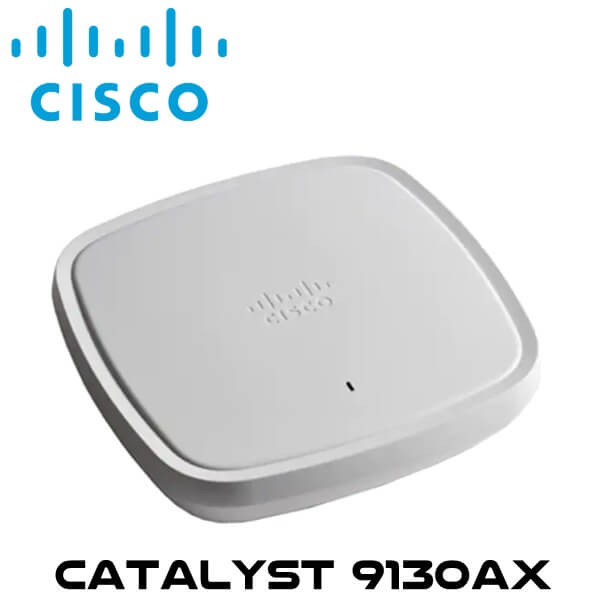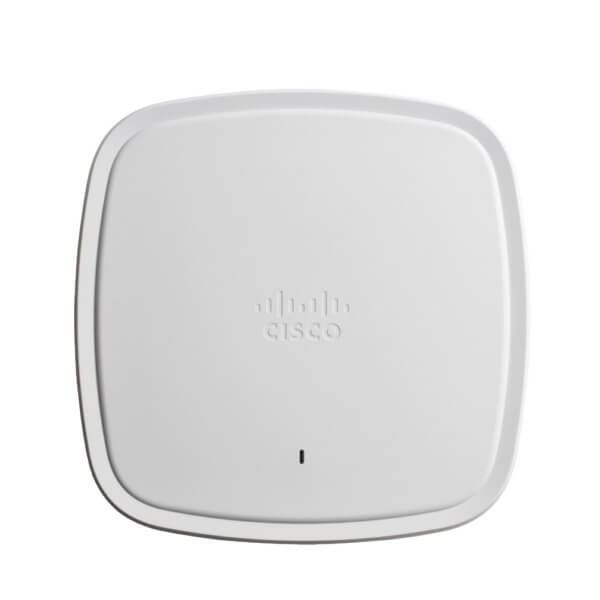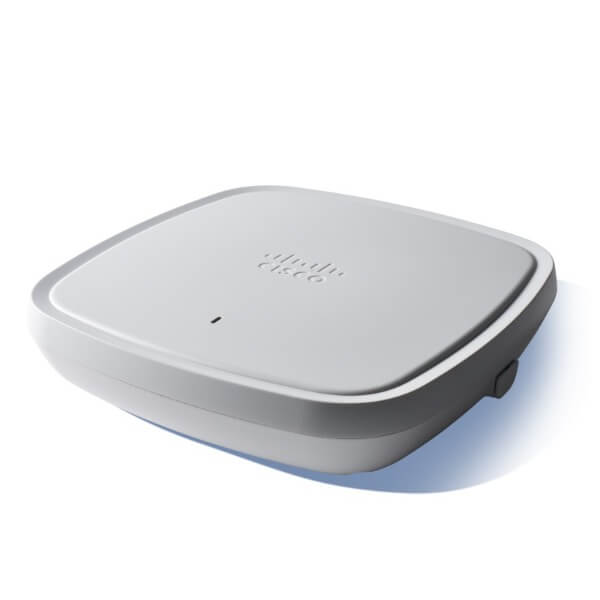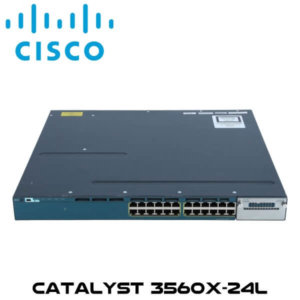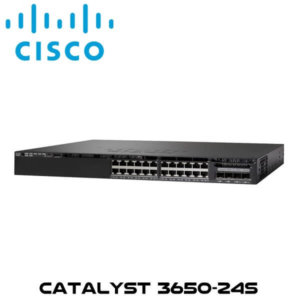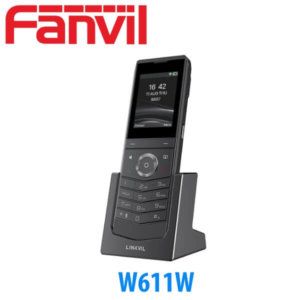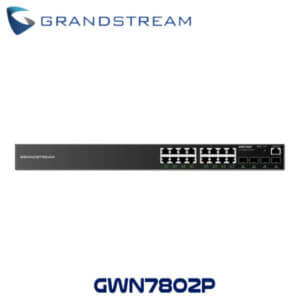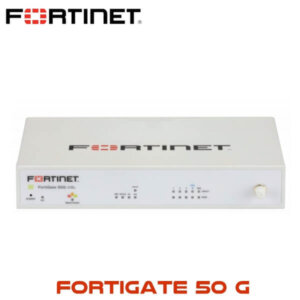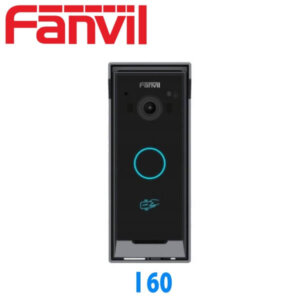Description
Cisco Catalyst9130AX Access Point Ghana
The Cisco Catalyst9130AX Ghana features the next generation of enterprise access point pack with several technologies and innovation ensuring resilience, security, and intelligence to low-bandwidth IoT devices. Cisco Catalyst9130AX Access Points provide a seamless experience anywhere for everyone, with high scaling and unmatched performance in diverse network deployments. Going beyond the Wi-Fi 6 (802.11ax) standard, this Cisco WiFi Ghana provides integrated security, resiliency, and operational flexibility as well as increased network intelligence.
Extending Cisco’s intent-based network and perfect for networks of all sizes, the Cisco Catalyst 9130AX Series scales to meet the growing demands of IoT while fully supporting the latest innovations and new technologies. The 9130AX Series is also a leader in performance, security, and analytics.
The Cisco Catalyst9130AX WiFi Ghana, paired with the Cisco Digital Network Architecture (Cisco DNA), are enterprise-class products that will address both your current and future needs. They are the first step in updating your network to take better advantage of all of the features and benefits that Wi-Fi 6 provides.
Features
Wi-Fi 6 (802.11ax)
The IEEE 802.11ax emerging standard, also known as High-Efficiency Wireless (HEW) or Wi-Fi 6, builds on 802.11ac. Cisco Catalyst9130AX Ghana delivers a better experience in typical environments with more predictable performance for advanced applications such as 4K or 8K video, high-density, high-definition collaboration apps, all-wireless offices, and IoT. Wi-Fi 6 is designed to use both the 2.4-GHz and 5-GHz bands, unlike the 802.11ac standard.
Cisco RF ASIC
The Cisco RF Application-Specific Integrated Circuit (ASIC) is a fully integrated Software-Defined Radio (SDR) that can perform advanced RF spectrum analysis and delivers features such as Cisco CleanAir, Wireless Intrusion Prevention System (WIPS), Fast Locate, and Dynamic Frequency Selection (DFS) detection.
Uplink/downlink OFDMA
Orthogonal Frequency-Division Multiple Access (OFDMA)-based scheduling splits the bandwidth into smaller frequency allocations called Resource Units (RUs), which can be assigned to individual clients in both the downlink and uplink directions to reduce overhead and latency.
Uplink/downlink MU‑MIMO technology
Supporting eight spatial streams, Multiuser Multiple Input, Multiple Output (MU-MIMO) enables access points to split spatial streams between client devices to maximize throughput
BSS coloring
Spatial reuse (also known as Basic Service Set [BSS] coloring) allows Cisco Catalyst9130AX WiFi Ghana and their clients to differentiate between BSSs, thus permitting more simultaneous transmissions.
Target Wake Time
A new power-saving mode called Target Wake Time (TWT) allows the client to stay asleep and to wake up only at prescheduled (target) times to exchange data with the access point. This offers significant energy savings for battery-operated devices, up to three to four times the savings achieved by 802.11n and 802.11ac.
Intelligent Capture
Cisco Catalyst9130AX Ghana has intelligent Capture probes the network and provides Cisco DNA Center with deep analysis. The software can track more than 240 anomalies and instantaneously review all packets on demand, emulating the onsite network administrator. Intelligent Capture allows for more informed decisions on your wireless networks.
Flexible Radio Assignment (FRA) with tri-radio mode
FRA allows the access points to intelligently determine the operating mode of serving radios based on the RF environment and traffic demands. The access points can operate in the following modes:
- Dual-radio mode: One 8×8 5 GHz and one 4×4 2.4 GHz. One radio will serve clients on the 5-GHz band, while the other serves clients on the 2.4-GHz band.
- Tri-radio mode: * Dual 4×4 5 GHz and one 4×4 2.4 GHz. With two 4×4 5-GHz and one 4×4 2.4-GHz radios (tri-radio) inside the access point, client device capacity can be increased on demand.
The access point’s default mode is dual radio with 8×8 5 GHz and 4×4 2.4 GHz. It has the ability to split the 8×8 radio into two separate 4×4 5-GHz radios through software, thereby enabling the benefits of FRA while allowing the 2.4-GHz radio to remain active.
Industry first 8×8 external antenna access point with smart antenna connector
The Cisco Catalyst9130AX Ghana is among the first in the industry to provide an 8×8 radio architecture with external antennas. Additionally, these antennas can be split into a dual 4×4 radio architecture. An intelligent physical antenna connector is included on the 9130AX Series with an external antenna. This connector provides advanced network design flexibility for high-density and large open-area environments such as auditoriums, convention centers, libraries, cafeterias, and arenas/stadiums.
Cisco Embedded Wireless Controller (EWC)
An Embedded Wireless Controller on the Cisco Catalyst9130AX Ghana is designed for networks of all sizes, including small and medium-sized businesses and distributed enterprises. It provides industry-leading wireless LAN technology without the need for a physical wireless controller.
Multigigabit Ethernet support
Multigigabit Ethernet provides uplink speeds of 5 Gbps and 2.5 Gbps, in addition to 100 Mbps and 1 Gbps. All speeds are supported on Category 5e cabling, as well as 10GBASE-T (IEEE 802.3bz) cabling.
Bluetooth 5
With the integrated Bluetooth Low Energy (BLE) 5 radio Cisco WiFi Ghana enables location-based use cases such as asset tracking, wayfinding, and analytics.
Container support for applications
Cisco Catalyst9130AX Ghana has container support fpr applications enabling edge computing capabilities for IoT applications on the host access point.
Apple features
Apple and Cisco have partnered to create an optimal mobile experience for iOS devices on corporate networks based on Cisco technologies. Using new features in Apple iOS, in combination with the latest software and hardware from Cisco, businesses can now more effectively use their network infrastructure to deliver an enhanced user experience across all business applications.
Specifications
| Part numbers |
|
||||||||||||||||||
| Software |
|
||||||||||||||||||
| Supported wireless LAN controllers |
Note : C9130AXE-STA-x is not supported on AireOS controllers |
||||||||||||||||||
| 802.11n version 2.0 (and related) capabilities |
|
||||||||||||||||||
| 802.11ac |
|
||||||||||||||||||
| 802.11ax |
|
||||||||||||||||||
| Integrated antenna |
|
||||||||||||||||||
| External antenna with smart antenna connector |
|
||||||||||||||||||
| Interfaces |
|
||||||||||||||||||
| Indicators | Status LED indicates boot loader status, association status, operating status, boot loader warnings, and boot loader errors | ||||||||||||||||||
| Dimensions (W x L x H) | Access point (without mounting brackets) :
|
||||||||||||||||||
| Weight |
|
||||||||||||||||||
| Input power requirements |
|
||||||||||||||||||
| Catalyst 9130AXI | |||||||||||||||||||
| PoE power consumption | 2.4-GHz radio | 5-GHz radio | Link speed | USB | Link Layer Discovery Protocol (LLDP) | ||||||||||||||
| 802.3at (PoE+) | 4×4 | 8×8 | 5G | N | 25.5W | ||||||||||||||
| 802.3at (PoE+) | 4×4 | 4×4 | 5G | Y [4.5W] | 25.5W | ||||||||||||||
| 802.3bt (Cisco UPOE) | 4×4 | 8×8 | 5G | Y [4.5W] | 30.5W | ||||||||||||||
| Cisco Catalyst 9130AXE | |||||||||||||||||||
| PoE power consumption | 2.4-GHz radio | 5-GHz radio | Link speed | USB | LLDP | ||||||||||||||
| 802.3at (PoE+) | 4×4 | 8×8 | 5G | N | 25.5W | ||||||||||||||
| 802.3at (PoE+) | 4×4 | 4×4 | 5G | Y [4.5W] | 25.5W | ||||||||||||||
| 802.3bt (Cisco UPOE) | 4×4 | 8×8 | 5G | Y [4.5W] | 30.5W | ||||||||||||||
| Cisco Catalyst 9130AXI and 9130AXE | |||||||||||||||||||
| PoE power consumption | 2.4-GHz radio | 5-GHz radio | Link speed | USB | LLDP | ||||||||||||||
| 802.3af | PoE | 1×1 | 1×1 | 1G | N | 13.4W | |||||||||||||
| Environmental |
Note : When the ambient operating temperature exceeds 40°C, the access point will shift from 8×8 to 4×4 on the 5 GHz radio, uplink Ethernet will downgrade to 1 Gigabit Ethernet; however, the USB interface will remain enabled.
|
||||||||||||||||||
| System memory |
|
||||||||||||||||||
| Warranty | Limited lifetime hardware warranty | ||||||||||||||||||
| Available transmit power settings | 2.4 GHz
|
5 GHz
|
|||||||||||||||||
| Transmit (Tx) power and receive (Rx) sensitivity | |||||||||||||||||||
| 5-GHz primary radio | 5-GHz secondary radio | 2.4-GHz radio | |||||||||||||||||
| Spatial streams | Number of active antennas | Total Tx power (dBm) | Rx sensitivity (dBm) | Total Tx power (dBm) | Rx sensitivity (dBm) | Total Tx power (dBm) | Rx sensitivity (dBm) | ||||||||||||
| 802.11/11b | |||||||||||||||||||
| 1 Mbps | 1 | 4 | – | – | – | – | 23 | -104 | |||||||||||
| 11 Mbps | 1 | 4 | – | – | – | – | 23 | -96 | |||||||||||
| 802.11a/g | |||||||||||||||||||
| 6 Mbps | 1 | 4 | 23 | -100 | 23 | -99 | 23 | -98 | |||||||||||
| 24 Mbps | 1 | 4 | 22 | -92 | 22 | -92 | 22 | -91 | |||||||||||
| 54 Mbps | 1 | 4 | 21 | -84 | 21 | -83 | 20 | -82 | |||||||||||
| 802.11n HT20 | |||||||||||||||||||
| MCS0 | 1 | 4 | 23 | -99 | 23 | -99 | 23 | -98 | |||||||||||
| MCS31 | 4 | 4 | 20 | -77 | 20 | -77 | 20 | -75 | |||||||||||
| 802.11n HT40 | |||||||||||||||||||
| MCS0 | 1 | 4 | 23 | -96 | 23 | -96 | – | – | |||||||||||
| MCS31 | 4 | 4 | 20 | -75 | 20 | -75 | – | – | |||||||||||
| 802.11ac VHT20 | |||||||||||||||||||
| MCS0 | 1 | 4 | 23 | -100 | 23 | -99 | – | – | |||||||||||
| MCS9 | 4 | 4 | – | – | – | – | – | – | |||||||||||
| MCS0 | 1 | 8 | 26 | -102 | – | – | – | ||||||||||||
| MCS8 | 8 | 8 | 23 | -73 | – | – | – | ||||||||||||
| MCS9 | 8 | 8 | – | – | – | – | – | ||||||||||||
| 802.11ac VHT40 | |||||||||||||||||||
| MCS0 | 1 | 4 | 23 | -96 | 23 | -96 | – | – | |||||||||||
| MCS9 | 4 | 4 | 19 | -69 | 19 | -69 | – | – | |||||||||||
| MCS0 | 1 | 8 | 26 | -99 | – | – | – | ||||||||||||
| MCS9 | 8 | 8 | 22 | -69 | – | – | – | ||||||||||||
| 802.11ac VHT80 | |||||||||||||||||||
| MCS0 | 1 | 4 | 23 | -93 | 23 | -93 | – | – | |||||||||||
| MCS9 | 4 | 4 | 19 | -65 | 19 | -64 | – | – | |||||||||||
| MCS0 | 1 | 8 | 26 | -95 | – | – | – | ||||||||||||
| MCS9 | 8 | 8 | 22 | -65 | – | – | – | ||||||||||||
| 802.11ac VHT160 | |||||||||||||||||||
| MCS0 | 1 | 4 | 26 | -89 | – | – | – | ||||||||||||
| MCS9 | 4 | 4 | 21 | -61 | – | – | – | ||||||||||||
| 802.11ax HE20 | |||||||||||||||||||
| MCS0 | 1 | 4 | 23 | -99 | 23 | -99 | 23 | -98 | |||||||||||
| MCS11 | 4 | 4 | 18 | -66 | 18 | -66 | 17 | -65 | |||||||||||
| MCS0 | 1 | 8 | 26 | -102 | – | – | – | ||||||||||||
| MCS11 | 8 | 8 | 21 | -65 | – | – | – | ||||||||||||
| 802.11ax HE40 | |||||||||||||||||||
| MCS0 | 1 | 4 | 23 | -96 | 23 | -96 | – | – | |||||||||||
| MCS11 | 4 | 4 | 18 | -63 | 18 | -62 | – | – | |||||||||||
| MCS0 | 1 | 8 | 26 | -99 | – | – | – | ||||||||||||
| MCS11 | 8 | 8 | 21 | -63 | – | – | – | ||||||||||||
| 802.11ax HE80 | |||||||||||||||||||
| MCS0 | 1 | 4 | 23 | -93 | 23 | -93 | – | – | |||||||||||
| MCS11 | 4 | 4 | 17 | -59 | 17 | -59 | – | – | |||||||||||
| MCS0 | 1 | 8 | 26 | -96 | – | – | – | ||||||||||||
| MCS11 | 8 | 8 | 20 | -59 | – | – | – | ||||||||||||
| 802.11ax HE160 | |||||||||||||||||||
| MCS0 | 1 | 4 | 26 | -88 | – | – | – | ||||||||||||
| MCS11 | 4 | 4 | 19 | -56 | |||||||||||||||


